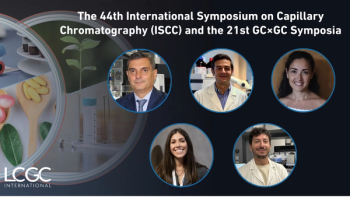
- The Column-02-18-2013
- Volume 9
- Issue 3
Therapeutic poison
A team of scientists in Germany1 has identified a new protein from the venom of the snake, Vipera palaestinae, that could be used in the development of anti-cancer drugs.
A team of scientists in Germany1 has identified a new protein from the venom of the snake, Vipera palaestinae, that could be used in the development of anti‑cancer drugs.
The scientists performed affinity chromatography, using part of the α2β1 integrin as bait, to “pull-out” candidate toxins from a pool of venom. When this venom from the snake is injected into the victim, the toxins induce immobilization and, in most cases, death. The venom toxins target key receptors within the body that are also the targets of drug development.
Johannes Eble, co-author and professor at Frankfurt University Hospital, (Frankfurt, Germany), told The Column: “Poisonous venoms are cocktails consisting of a plethora of pharmacologically highly‑effective compounds directed against one or all of the essential organ systems”.
A previous study published in 2012, in the journal Nature, demonstrated that proteins biochemically isolated from the black mamba had potential pain-relieving effects in mice.2
Once biochemically isolated, individual venom compounds can possess strong and selective binding without the lethality. “This makes these evolutionarily optimized compounds ideal tools for basic research and lead structures to develop highly effective lead compounds for various disorders, such as hypertension, thrombosis and cancer,” according to Eble.
In this study, the search was for toxins that could inhibit the function of α2β1 integrin. A so-called “sticky protein”, it plays a key role in wound healing by aiding the aggregation of platelets. However, it also has a well-documented role in the inappropriate migration of cancer cells, metastasis. Consequently, this is a target for scientists developing drugs to inhibit metastasis.
The candidate toxin VP-1 was found to bind to the integrin, and subsequent testing proved that the toxin inhibited the migration of cancer cells in vitro.
The demonstration that VP-1 is able to bind and inhibit the α2β1 integrin presents a new model for the development of biotherapeutics for the inhibition of metastasis.
References
1. J. Eble et al, Toxicon DOI: 10.1016/j.toxicon. 2013.01.001 (2013).
2. S. Diochot et al, Nature DOI:10.1038/ nature11494 (2012).
Articles in this issue
almost 13 years ago
We Just Can't Do It!almost 13 years ago
2,000-year-old medicine discovered on shipwreckalmost 13 years ago
Trapping versus FractionationNewsletter
Join the global community of analytical scientists who trust LCGC for insights on the latest techniques, trends, and expert solutions in chromatography.




